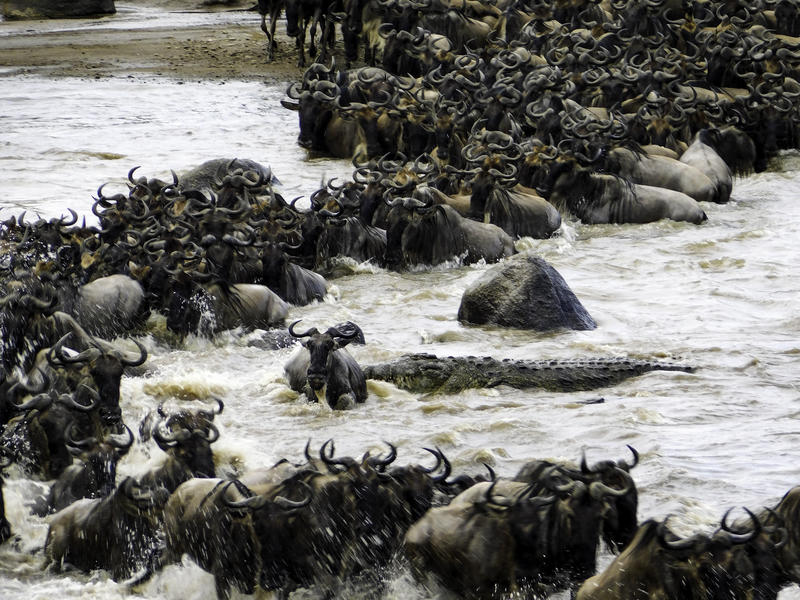Wilderness Usawa Serengeti
Highlights
- Serengeti National Park, at 15,000 square kilometres (1.5 million hectares) is one of the Seven Natural Wonders of Africa and home to the Great Migration; here two million wildebeest, zebra and other plains game cross the savannah in search of grazing grounds and water, prey to a variety of predators including lions, hyenas and crocodiles.
- With access to nine key migration sites across the Serengeti, Wilderness Usawa Serengeti is truly mobile, following the ever-moving mega-herds throughout the year.
- The flexibility of Wilderness Usawa Serengeti allows us to position guests near the action, but far enough from the crowded tourist hotspots.
- Though the camp set-up is completely mobile, it is luxuriously appointed; no comfort is sacrificed.
Destination: In northern Tanzania, the Serengeti spans 15,000 square kilometres (1.5 million hectares) on the border of Kenya’s Masai Mara. Here, over two million wildebeest, zebra, Thomson’s gazelle, eland and other plains game make a nearly one thousand kilometre round trip, following the rains in search of fertile grazing and water. Grassy plains stretch as far as the eye can see, interrupted by the occasional acacia tree or kopje, a favoured vantage point of the Serengeti lions. The Serengeti supports an incredibly diverse ecosystem, with terrain ranging from the crater highlands, sloping down to the low areas around the eastern shores of Lake Victoria. The Mara and Grumeti rivers flow through the reserve – treacherous points of crossing for the herds as they migrate.
Experience: Game viewing in the Serengeti is unparalleled. The volume of wildlife is unmatched anywhere in Africa. Predators are abundant too, with prides of lion, as well as hyenas, crocodiles and cheetah thriving on the sheer volume of available prey. Calving season peaks in February, when between 300,000 and 400,000 wildebeest are born, immediately joining the herds on their journey.
Wilderness Usawa Serengeti offers an exceptional migration experience. At any given time, two camps are set up for guests to enjoy the best possible access to the migration.
Guests have the option to enjoy early morning game drives, with hot coffee and breakfast on the rocky kopjes, and afternoon game drives and sundowners for golden light photography. For the really enthusiastic guest, full-day drives – with a packed picnic lunch so as not to miss any of the action – can also be arranged, before returning to camp at sunset for an evening around the fire.
All nine of Wilderness Usawa Serengeti’s sites are ideally situated within the Serengeti’s designated walking areas, which allows guided walks to begin right from camp. Skip a morning drive and walk the plains with a knowledgeable Wilderness guide who will curate the experience based on individual guest interest. Though the migratory animals are the highlight, the birding in the Serengeti is outstanding as well.
Purpose: Through formal training programmes for underprivileged children, and by educating and upskilling the community, Wilderness empowers communities to reduce their reliance on poaching, snaring and cutting down trees. By working with the authorities and other local partners, the company strives to protect the phenomenal natural areas of Serengeti National Park.
Wildlife: The Serengeti is known for its phenomenal volume of wildlife: from plains game like impala, Grant’s gazelle, and giraffe, to the migratory wildebeest and zebra, in herds that reach two million. Beyond the migratory species, the Serengeti hosts exceptional diversity, and is home to 28 species of small and large predators and 29 species of herbivore; these include elephant, buffalo, rhino, leopard, and of course the legendary prides of lion. Crocodiles live in the rivers and prey on crossing animals, while hyenas and cheetah hunt in the plains.
Of the more than 500 avian species found in the park, some endemic specials to look out for are the grey-breasted spurfowl, Schalow's wheatear, red-throated tit, rufous-tailed weaver, grey-crested helmetshrike, Schalow's turaco and silverbird.







